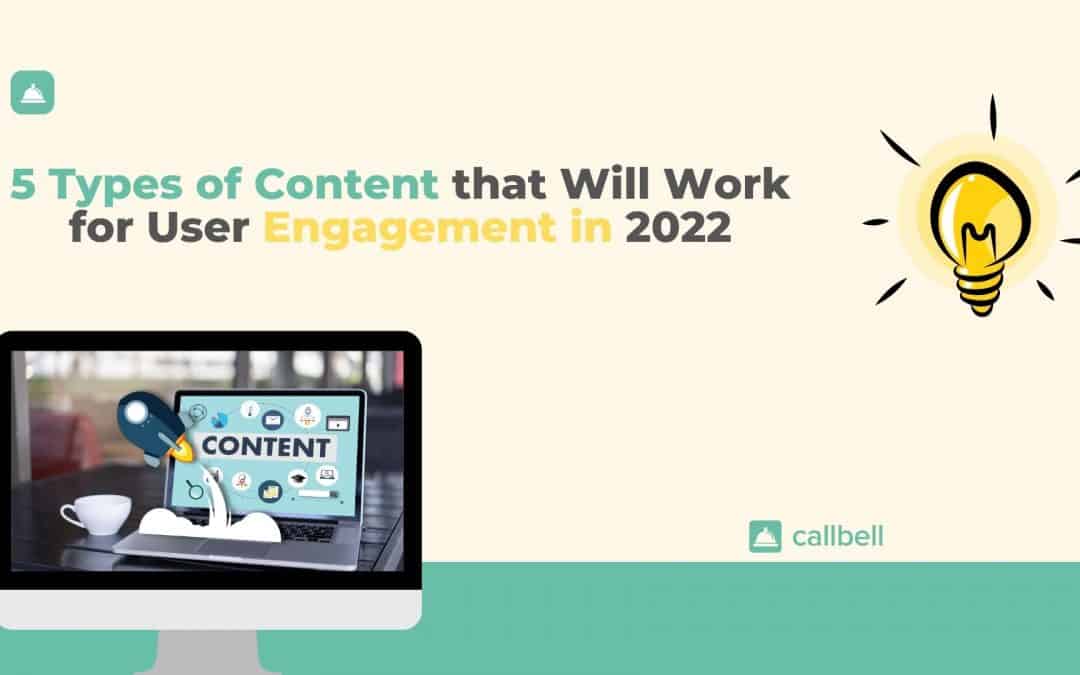Content engagement is a term referring to users’ interactions with the content you share. Basically, you can judge how well a piece is doing by seeing how the audience reacts to it. High engagement, a key objective of content operations, means that the piece is relevant and users who came across it liked it, read it, or watched it. There’s no solid metric for this, so the results vary depending on the channel you use to upload your content. If it’s Instagram, you’ll see likes and comments, as well as shares to the stories of users. If it’s a website, people will spend more time there, share your articles, videos, etc., comment, and start a dialogue with the company.




Bounce rate is the percentage of users that leave a page without any interaction. Most websites have bounce rates of 26%-70%. Why can bounce rates be so different? Because each page has a different purpose and not all of them require users to spend much time on the site. For example, if an informative page on your site has a high bounce rate, this may mean users have found the data they were looking for, i.e. your phone number.
d) Conversion rate

A higher conversion rate (obviously) shows that the content on the conversion page like a landing page is relevant and helps you achieve your goals. Some other, move obvious, metrics of content engagement are likes, comments, and shares. You can see them right there in your blog. Don’t use only one metric to judge your content. Use a combination of them.

Voice search is increasingly popular nowadays. People use it to research products, add them to shopping lists, and, of course, to look for information online. You can search in Google on your smartphone by simply pressing the microphone button, not to mention home assistants that offer the same features touch-free. It’s very convenient. According to Statista, it’s estimated that the number of digital voice assistants will reach 8.4 billion by 2024! That’s more than there are people in the world! This fact alone proves the increasing popularity of voice search. Your SEO should change according to such trends since the queries for voice search and regular search are different: a) “Restaurants near me New York” – a regular query b) “What are the best restaurants near me/in New York?” – a voice query This shift calls for adjustments to the keyword research for your content. When using a keyword tool to find queries to optimize for, focus on long-tail keywords, which often look like questions. Additionally, understanding the search intent of users should help you adjust keywords at every stage of the marketing funnel, from informational to transactional. So, we can clearly see that the term “brand voice” has become more straightforward with the voice search trend. 2) Storytelling via Augmented Reality

Many businesses go beyond voice search and offer augmented reality to complement their content. This is a very well-timed change since the AR and VR market is estimated to reach $161.1 billion by 2025, according to a study.
AR is exactly what it sounds like.
a) You capture a real-life scene with your camera.
b) Then, the algorithm of the website extension processes it and chooses where to place AR elements.
c) Finally, you see the image with the AR elements.
The following businesses can use augmented reality to improve customer experience and aid client retention, dramatically increasing content engagement:
a) Interior desig
b) Beauty industry
c) Retail industry
d) Gaming
e) Healthcare
f) Travel and tourism
You can choose the range of technology. It could be anything from simply showing people how a piece of furniture will look in your room or how an outfit will look on you to helping healthcare specialists educate and help people.
Keep in mind the quality of content, both textual and visual, that will improve the AR experience you offer.
With an increase in popularity, many developers offer solutions to create AR experiences, including Amazon and its Amazon Sumerian.
3) Advanced AI (Artificial Intelligence)
Artificial intelligence has gone much further than automatic chatbots to communicate with customers, answer frequently asked questions, and encourage people to buy. Integration of AI into your content and marketing strategies has become a trending topic.
The revenue for AI software worldwide is estimated to reach $62.5 billion in 2022. This is a more than 21% growth since 2021, which proves that the use of this technology is increasing dramatically.
Nowadays, AI can be used:
a) In data analysis, pattern recognition, etc. This is great for customer behavior analysis and content optimization based on the results.
b) Plagiarism and grammar checks.
c) AI-powered content creation, etc.
d) To generate AI voice for videos
The last point may sound dangerous to writers, but keep in mind that AI works best with human efforts.
The tech should help you create content that will engage users more because AI used in research will let you know what people are interested in, what their intent is at a certain stage of the search, etc. To create engaging content with such AI-based tools, take help from an online paraphrase tool. It uses advanced AI technology and paraphrases your content while retaining its actual meaning. By generating AI-powered user-engaging content, you’ll be one step ahead, answering their questions faster than they ask them.
4) Live, Virtual, and Hybrid Events

When it comes to events, you can opt for:
a) Live, when all attendees are physically present in one location
b) Virtual, when the event is held online and the attendees join
c) Hybrid events, when the speakers, for example, are present at the venue and the viewers join online.
Hybrid events are the most universal since you can create a great setting and invite experts and speakers to hold all kinds of webinars. They can be informational, educational, marketing, etc. Mixes are also applicable, just like the webinars we see everywhere now.
If you want to create something different, consider the following recommendations:
a) Offer attendees an option to interact via video or text. All kinds of chats and video conferences work well since people can ask questions about your products and get answers live. Plus, collaborate with video marketing agencies to enhance the quality and reach of your events.
b) Offer people to interact with each other. This works well if you have a group of VIP customers and an agenda to discuss with them, for instance.
c) Add 3D elements to improve the experience. You can offer to create avatars for every attendee or create whole rooms where you can chat.
Presenting content this way will give you maximum engagement since you can talk to people live, find out the most frequently asked questions, and base future blog articles on those questions.
5) Educational Content
Educational content will increase engagement because:
a) People will learn about the brand and connect with it emotionally.
b) You’ll have a chance to build value by explaining the benefits of your products or services
c) You’ll engage with the audience and build trust.
d) You’ll find out the gaps in your product and service descriptions based on the questions people ask, etc.
There are many creative ideas for delivering educational information to your users:
a) The interactive webinars we talked about in the previous section.
b) b) All kinds of guides, ebooks, additional educational documents that students share on a Studocu platform learning resource, etc. You can use a dynamic QR code generator to add QR codes on the pages that will guide people to your website to get more info, watch a video, read a review.
c) Quizzes (interesting ones, not annoying ones). They will also help you gather some data for processing and even get leads. Just make sure you don’t ask for too much personal information beyond name and email. Anonymous quizzes can also be a part of your content strategy.
d) Calculators for prices, calories, most suitable products, etc., depending on the type of business you have.
e) Contests for knowledge of your products with prizes.
f) Online courses, that will help your users to easily use your business
The more creative, interesting, and rewarding your educational content is, the more engagement it will get.
Optimize your content for voice search, and make the voice of your business known and recognized. Use advanced technologies like augmented reality and artificial intelligence. They will help you gather more data about your target audience and create better content, making it more interesting and relevant. You can find many practical tips to help you with your content writing on specialized websites.
Engage with users by offering hybrid events and educational content. Hold webinars, offer rewards for quizzes, and make your content as personalized and useful as possible. This will garner more social media shares, boost brand awareness, and draw more people to your interactive content and, consequently, to your products and services.
What Is Content Engagement?
How to Measure Content Engagement?
- Session duration
- Pages Per Session
- Bounce rate
- Conversion rate
About the author: Hello! I am Alan and I am the marketing manager at Callbell, the first communication platform designed to help sales and support teams to collaborate and communicate with customers through direct messaging applications such as WhatsApp, Messenger, Telegram and Instagram Direct




